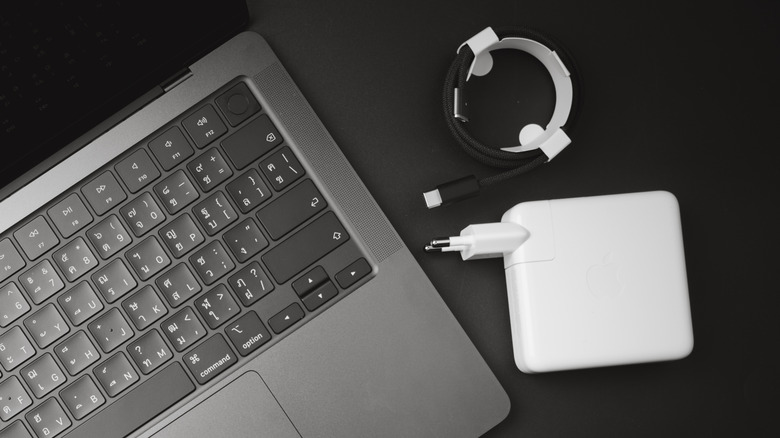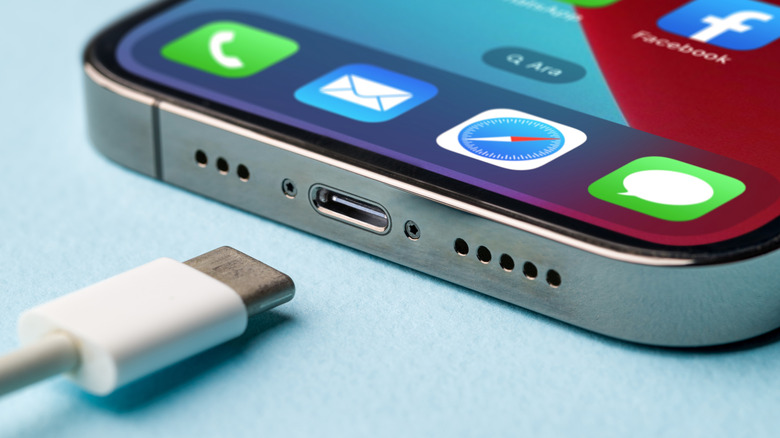You Can Charge Your iPhone With A MacBook Charger, But Is It Safe To Do So?
If you've bought an iPhone in recent years, you probably noticed that it now comes in a slimmer box with no free charger inside. This isn't a mistake. Starting with the iPhone 12 series in 2020, Apple chose to ditch the AC adapter for environmental reasons. No free chargers means less e-waste and fewer raw materials used in production. Plus, leaving out the power adapter allows the company to shrink the iPhone packaging and ship more units in a single batch, ultimately reducing carbon emissions.
The problem now, though, is that you'll have to find an alternative way to charge your device. Thankfully, there are plenty of trustworthy cord and charger brands for the iPhone you can readily find on the market. But if you're on a budget and already have a MacBook charger lying around, you can actually use that too. Just connect the included cable to the power adapter, and you're good to go. But is this method safe at all?
Will a MacBook charger damage your iPhone?
MacBook chargers are one of the safest replacement adapters to pair with your iPhone, as per Apple itself. As an Apple product, they've most certainly passed the company's safety standards for iPhone chargers. So, as long as you're using a genuine Mac power adapter with USB-C, you generally have nothing to worry about.
It's important to note, though, that Apple doesn't recommend using all MacBook chargers with all iPhone models. According to the chargers' spec sheet, the lower wattage adapters, like the 30W USB-C and 35W Dual USB-C, only support the models from iPhone 8 and 8 Plus up to the latest releases. For the higher-wattage MacBook chargers (70W USB-C, 96W USB-C, and 140W USB-C), the only iPhones that are compatible are all iPhone 15 and 16 variants.
This recommendation, however, doesn't mean that a 70W MacBook charger will damage your iPhone 13. iPhones, like many other modern smartphones, will only pull as much current from the charger as it needs. This maximum current draw generally remains the same regardless of the adapter's wattage.
For instance, in a charging test conducted by YouTuber PhoneArena, an iPhone 16 Pro Max was connected to an Anker 65W and Samsung 45W adapter. With both chargers, the handset only drew at most 27W, despite the difference in the wattage. So even if you charge an iPhone with a 100W adapter, the device will only treat it as if it's a low-wattage variant — no compromises in its safety at all.
But if you really want to err on the safe side, you can always follow Apple's guidance on device compatibility on the charger's specification sheet.

